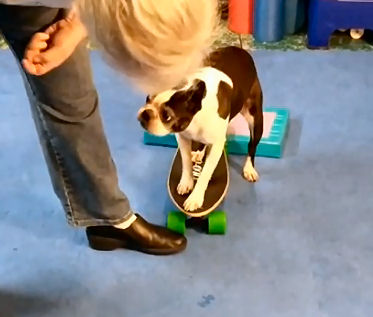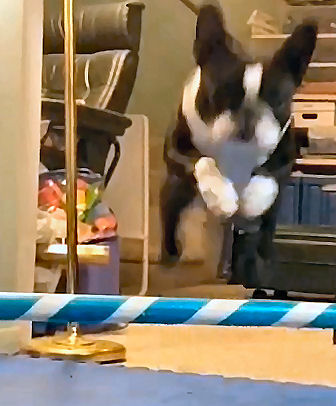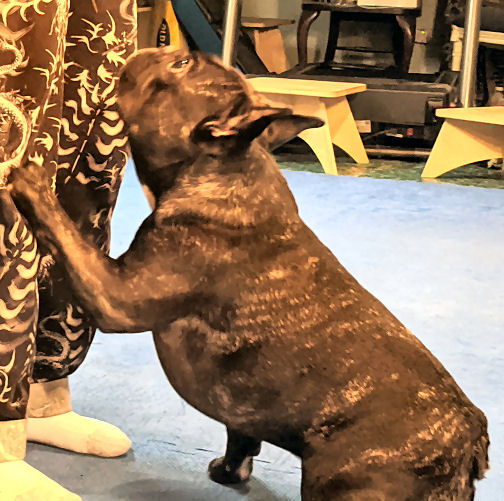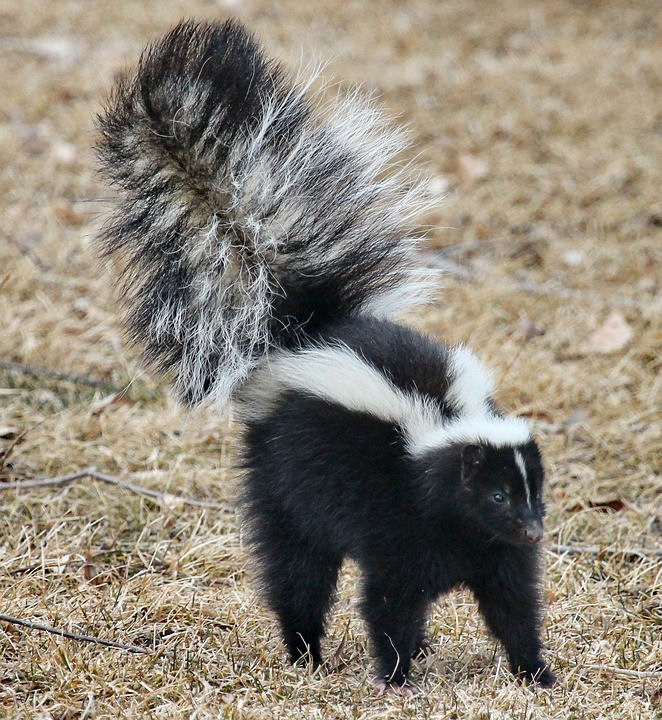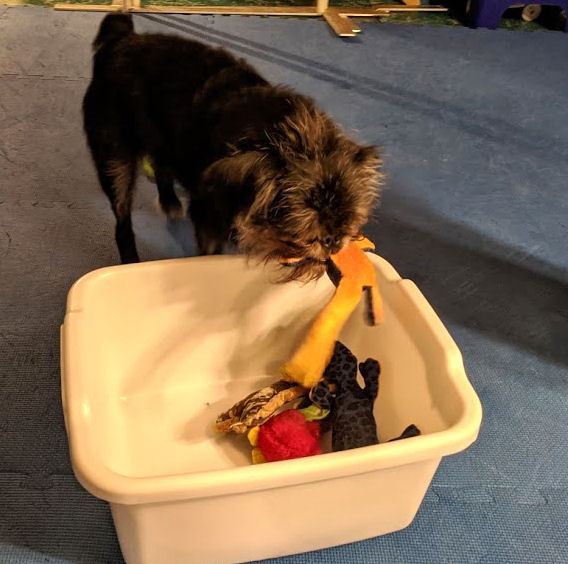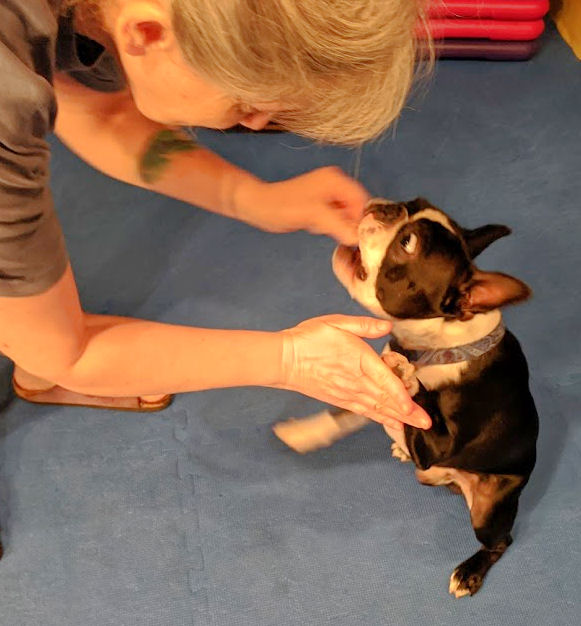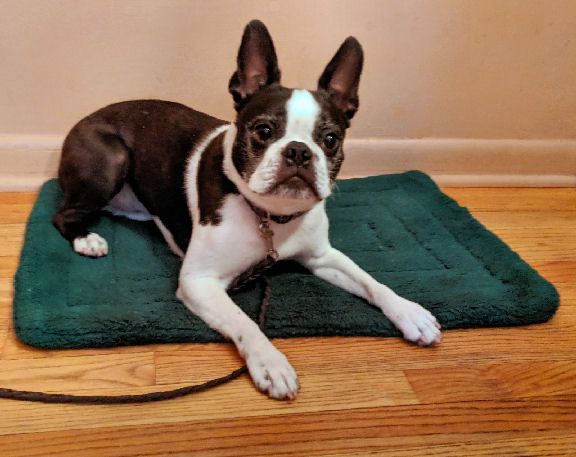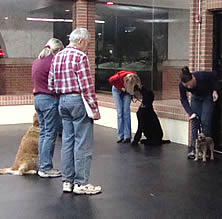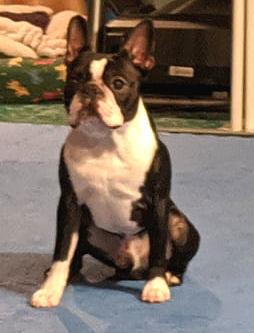It’s the very first thing we “work” on with puppies – get your dog to calm down. Just like human children, puppies don’t really know when they’re over-tired. They’ll fight taking a nap, just like a toddler. You can watch their eyelids droop, but they just won’t relax. As they get more and more tired, puppies can get increasingly frantic. And your frustration grows. The dog needs to nap. And you need to grab a shower and a meal!
Puppies are little tyrants. If you allow it, they’ll take over every aspect of your life and schedule. They’re selfish little beasts, only caring about their own needs and wants.
Frankly, if puppies weren’t so adorable your heart melts, there’d be no excuse for them.
Start with the basics
“Sit and accept praise” is one of the very first behaviors we teach with a new dog or puppy in the house. When the new addition gets you up at four in the morning and, after a potty break, decides it’s play time, you need a way of letting him/her know that’s not the way it’s going to be.
Many trainers would have you stuff the puppy in the crate, maybe even cover it, and wrap a pillow over your head to muffle the complaints. The ear-piercing, howling misery.
But we’re not believers in letting a dog or puppy cry itself into exhaustion. The dog doesn’t learn anything from that. Even at four in the morning, it’s time for a session of “Sit And Accept Praise.”
Not the most fun training game
Our very first dog training mentor preached this exercise, even before positive reinforcement was a “thing” in dog training. He is a good and wise man.
This is probably the only 2-Minute-Trainer game that’s not really much fun for either of you at first. But it is part of the deal we make with our dogs. They get what they want when we get what we want. It’s a simple bargain, but an important one.
How Sit & Accept Praise works
Sit & Accept Praise is easy. With your dog wearing a collar, have him sit next to you. On the couch if it’s allowed. You get on the floor if it’s not. (As an aside: we don’t understand why people have upholstered furniture their dogs aren’t allowed to get on. But we think dogs are more valuable than any “stuff.”) (By the way – we also outline Sit & Accept Praise in our Puppy Basics. If you missed that, it’s no big deal, but you might want to get the free download for more great information.)
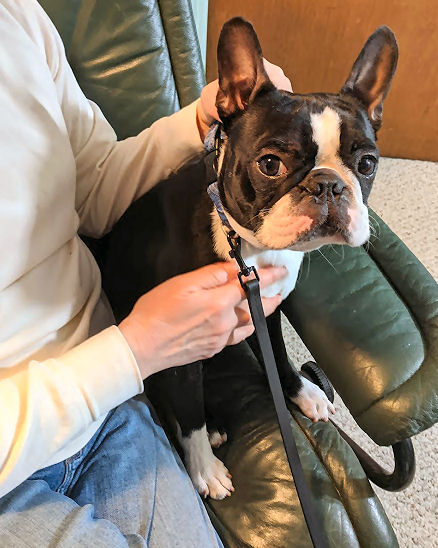
Your dog may not want to sit next to you. That’s why he/she is wearing a collar. With your arm and elbow holding the dog at your side, thread a couple of fingers through the dog’s collar. Make sure your position is comfortable and that, if the dog fusses and moves, your fingers won’t bend awkwardly. The game may not be the most fun, but it also shouldn’t hurt either one of you..
Then sit there, petting the dog with the other hand and speaking softly to him/her. Let your dog know that he’s a wonderful dog, and a good dog, and the handsomest dog in the world. If you’re a reader, read your book out loud. Just so your dog hears your voice being calm and gentle.
That’s pretty much it. It’s easy to get your dog to calm down with this technique.
Dog’s not having it
When you feel the dog start to relax, you can ease the tension in the arm holding the dog at your side. Keep talking and petting. An occasional treat is fine, too. As long as the dog doesn’t get too excited by it.
If, when you lessen the hold, your dog struggles, just go back to where you were. In time, your dog will learn that you mean it, it’s time to relax.
It may take more than one repetition for the message to get through. When your dog does relax, even lie down, give him/her a cue word that identifies the action. We use “relax,” so when our dogs’ tension eases, “good relax,” “nice relax, buddy,” “what a good relax.” That way, throughout the dog’s life, we can tell him to “Relax” and he knows what to do.

